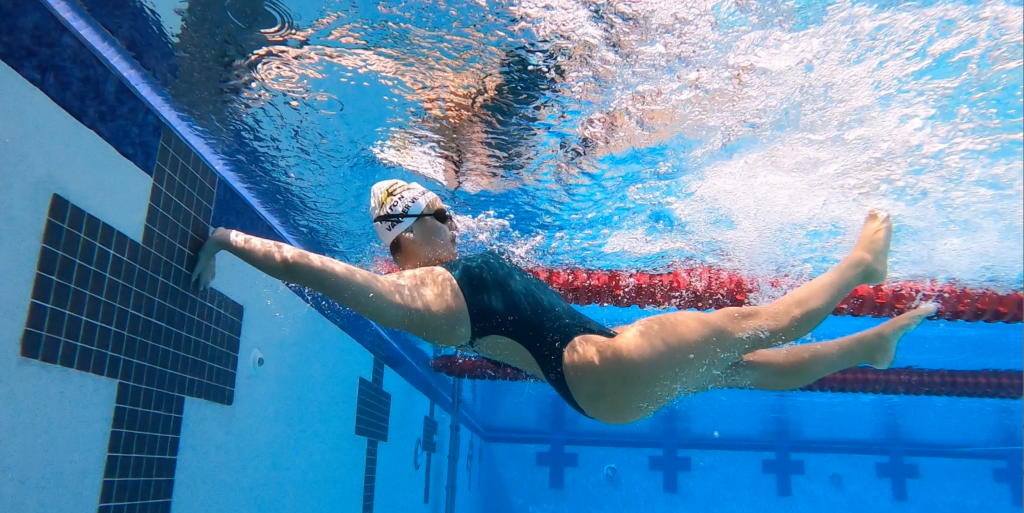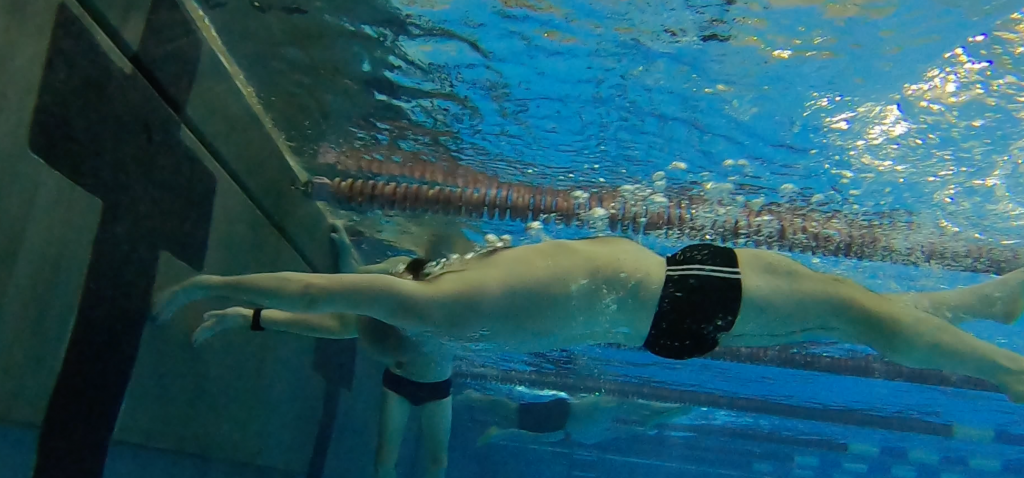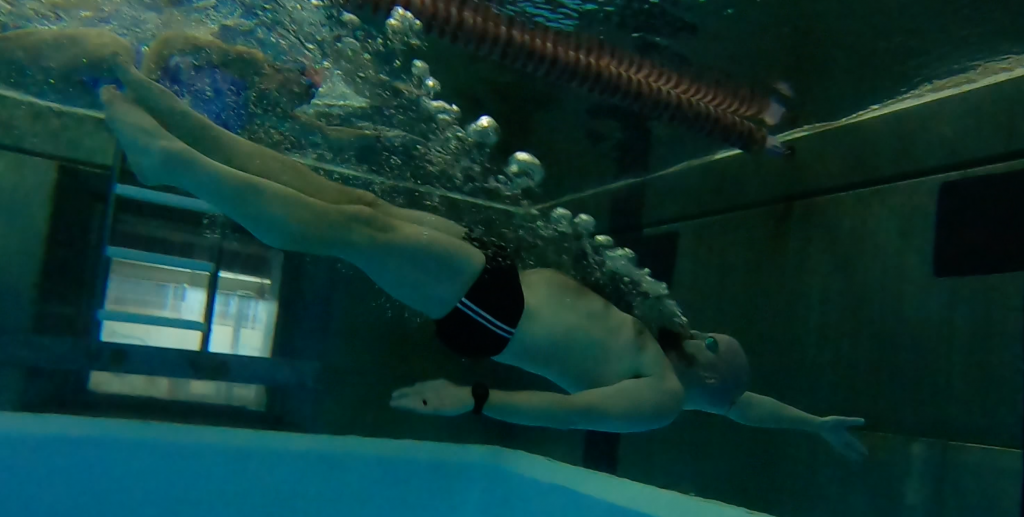A few weeks ago, World Aquatics (renamed from FINA), announced some additional verbiage being added to the Backstroke rules. This new verbiage deals specifically on what happens during a swimmer’s Backstroke Finish. With that, we decided to do a deep dive into what this means for the swimming community and how this shift may change Backstroke Finishes moving forward!
Let’s get started!
The current rules for Backstroke state:
Backstroke: The swimmer shall push off on his back and continue swimming on the back throughout the race. Some part of the swimmer must break the surface of the water throughout the race, except it is permissible for the swimmer to be completely submerged during the turn and for a distance of not more than 15 meters (16.4 yards) after the start and after each turn. By that point, the head must have broken the surface of the water. Additionally, once some part of the head of the swimmer has passed the 5 meter mark (long course and short course meters) or 5 yard mark (short course yards) immediately prior to reaching the finish, the swimmer may be completely submerged prior to the touch.
The bold is the added verbiage surrounded the Backstroke Finish that World Aquatics added.
What Does This Mean?
Basically if we translate that sentence, it means after a swimmer’s head passes the flag – they have the option to finish with their body staying ON the surface, parts of their body MIXING between the surface and below, or their entire body UNDER the surface!

Before, the rules statement one part of the swimmer’s body needed to be at the surface when finishing – so submerging totally was never an option. We did see quite a few variations of a Drop Back finish and Learn Back finish though. Some Coaches taught a swimmer to submerge underwater and kick a leg up, while others told them to throw the hand at their side towards the sky when hitting the wall. While all these finishes are still allowed, this new rule change has added an entire new category of submerging Backstroke Finishes into play and our goal today is to dissect all the new options of Submerged Backstroke Finishes that are out there now!
What are the NEW Submerged Backstroke Finish Options?
There’s predominately 2 new subtypes of Submerged Backstroke Finishes that have come up due to this rule change. One is a combination of different kicking styles with a stationary streamline heading into the wall. This means the arms are NOT in the equation here and a swimmer finishes with two arms above their hand. I call these Stationary Streamline Finishes (see below):

Or the second subtype is taking all of those different kicking combinations and adding a Backstroke Pull at the end, so the swimmer finishes with 1 hand! I call these Arm Pull Down Finishes (see below):

My gut instinct is that the pull down in combination with the kick is the best in terms of the amount of propulsion a swimmer can generate through the finish. But it gets tricky, because we want to make sure IF a swimmer decides to submerge on their finish – they don’t slow down going into the wall.
In the stroke technique world, we talk a lot about drag and minimizing it. Welp, if you go completely under the surface – there’s no way around it. So I’d like to advise that a TOTALLY SUBMERGE Backstroke Finish will not be useful for ALL SWIMMERS and it’s up to their coach to figure out which one is best for them. As a coach, you want a swimmers speed going into the wall to be as fast as possible – so if them dropping below the surface is actually slower (i.e. they aren’t a great Dolphin Kicker, they are really young, etc.) than you may just want to keep them at the surface.
With today’s blog post though, I’m going to give you all the different options of Submerged Backstroke Finishes out there though – and you take from it what you need to use with your swimmers!
Stationary Streamline Finish Options:
1.) Submerge at Flags and Flutter Kick In
2.) Submerge at Flags and Dolphin Kick in
3.) Submerge at Flags with a Dolphin Kick, then Flutter Kick In
4.) Submerge at Flags with a Flutter Kick, then Dolphin Kick in
The goal being with Submerged Backstroke Finishes is to quickly get the swimmer to transition under the surface of the water and continue to carry speed towards the wall. Naturally, my head thinks #3 out of these options would be the fastest because you could combine a Dolphin Kick and a single Arm Pull during the transition from swimming at the surface to under, then either keep with the Dolphin Kick or transition to a Flutter Kick through the Finish.
It is really common for swimmers to combination a Dolphin Kick with the first Arm Pull during Backstroke Breakouts, so I feel like that combination can help in the other direction too. Overall, I don’t think this style of finish would be faster than most swimmers above water Backstroke swimming speed though – unless for some reason they are an AMAZING Dolphin Kicker! And if Ryan Lochte has taught us anything, it is that you can be FASTER Dolphin Kicking on your Back than on your stomach!
Arm Pull Down Finish Options:
1.) Submerge at Flags and Flutter Kick In + 1 Arm Pull before Wall
2.) Submerge at Flags and Dolphin Kick in + 1 Arm Pull before Wall
3.) Submerge at Flags with a Dolphin Kick, then Flutter Kick In + 1 Arm Pull before Wall
4.) Submerge at Flags with a Flutter Kick, then Dolphin Kick in + 1 Arm Pull before Wall
Out of these 4 finish styles, I think the best would be either #2 or #3. #2 is what I’m leaning towards though. Reiterating what I said above under the Stationary Streamline options, you could get two points where the Arm Pull works with a Dolphin Kick: one at the transition from above water to below and another, as the arm pulls down before the touch.
Conclusion:
Experiment with these new Submerged Backstroke Finish styles and compare them against a Drop Back and Lean Back Finishes and see what works best for you. Also, be sure to stay tuned next week where we discuss whether Rotation is important and more Arm Pull specifics for Submerged Backstroke Finishes!
Until Next Time,
Abbie Fish

2 Responses
Good morning, Ms. Abbie Fish!
I was really interested in reading your article on the relatively new Backstroke submerged finish! Although, I was hoping you could assist me a little further. I’m currently a high school student enrolled in the AP Research class, and I am looking to go more in-depth as to the direct implications of the new World Aquatics regulation for my project. Long story short, I am struggling to find enough literature/resources online regarding experimentation with the novel technique or dedicated analyses of swimmers who might have adopted it. Please, if it’s not too much of a bother, could you get back to me with directions to go with my research? It would be of immense help, so thank you.
Cordially,
Randy C.
Randy – happy to help. I am on the road until October though, so if you can wait until then – we can connect. Please, shoot me an email [email protected] for more details. Thanks!